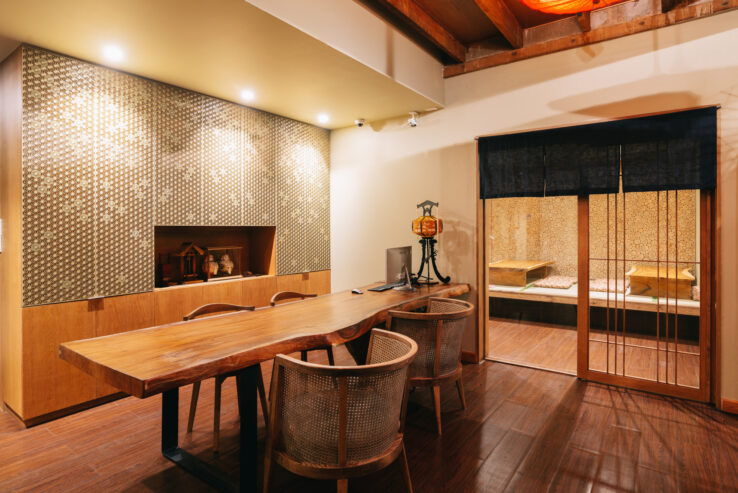Shochu Around the World: A Global Exploration of Japan’s Distilled Spirit
Experts project that the market for the Japanese distilled spirit, shochu, is about to explode. Demand for this liquor has increased across the globe. Now, it is expected to make up a multimillion-dollar industry by 2028.
At the Sake School of America, we offer shochu and sake education. We can turn a layman like you into a sake and shochu sommelier. It all starts with this guide.
So if you want to learn about shochu drinks, this guide is for you.
What Is Shochu?
Shochu alcohol is an indigenous Japanese alcohol made from distilled rice and other ingredients. Along with sake, this liquor has been Japan’s spirit of choice for over 500 years.
If you want to learn more about the difference between these two beverages, browse our shochu and sake education courses. Or keep reading this guide for the most important facts about shochu you need to know.
How Is Shochu Made?
Shochu is made through distillation. The number of times shochu undergoes distillation depends on the type.
For example, Honkaku shochu (also known as authentic shochu) goes through a single distillation process. It has an ABV (alcohol by volume) of up to 45%. Kourui shochu goes through multiple distillation processes and has an ABV of 36% or less.
Konwa shochu is also available. It is a more affordable type of shochu that consists of a mix between honkaku shochu and kourui shochu.
After distillation, shochu undergoes a maturation process. Then, producers put the distilled liquor in barrels made of stainless steel, clay, or wood.
The shochu may mature for one to three months or up to three years. Shochu that is matured for three to six months has a milder taste. Maturing for 1–3 years will result in a liquor with a very mellow flavor.
What Is Shochu Made From?
Like sake, rice is the most common ingredient for making shochu. Learn more about the difference between how producers make these Japanese spirits in our sake education course.
However, 50 other ingredients can appear in shochu. These include barley, buckwheat, sweet potato, chestnuts, and brown sugar, known as kokuto sugar in Japan.
When made of sweet potatoes, shochu is known as Imo shochu. It tastes rich and sweet with a powerful flavor that will invigorate your taste buds.
Mugi shochu consists of barley. This type of shochu is often multiply distilled, offering a clean and smooth flavor that pairs well with all kinds of dishes.
Brown sugar shochu is also known as kokuto shochu. It gets its name because brown sugar is called kokuto sugar in Japan. This type of shochu is slightly fruity and sweet yet surprisingly light.
Kome shochu is made from rice. It differs from awamori shochu because any region in Japan can produce it. This version offers a light and smooth flavor with a surprising dash of savoriness.
Finally, soba shochu consists of distilled buckwheat. The buckwheat confers a somewhat bitter flavor, though the overall taste profile is mild.
Where Is Shochu Made?
Shochu originates from the Okinawa and Kyushu regions in Japan. When made with Thai rice and black koji mold, shochu is known as Awamori or Ryukyu awamori. Awamori is exclusively produced in Okinawa.
Today, shochu production has expanded to other areas in Japan. For example, Iki shochu comes from Iki Island in Nagasaki. Producers make it from barley and koji mold.
Hitoyoshi Kuma produces another type of shochu called Kuma shochu. It consists of distilled rice. It also has a uniquely smooth texture due to the use of groundwater from the local region.
Satsuma shochu comes from the Kagoshima Prefecture in Japan. It is made of sweet potatoes, water, and koji mold. The koji mold comes from rice or potatoes grown in the region.
How Do People Drink Shochu in Japan?
Traditionally, people in Japan drink shochu on the rocks or straight. If you enjoy it straight, try it chilled or at room temperature. You can also cool shochu in the freezer, but you must use liquor with a higher ABV.
Mizuwari and oyuwari are two other traditional ways to enjoy shochu. Mizuwari is a mixture of shochu and water over ice. The mixture can be 50/50 water and shochu or a ratio of 3:2 or 2:3 water to shochu.
Oyuwari is nearly the same but comes with hot water instead of ice water. Enjoy shochu this way to take full advantage of its aromatic qualities.
How Do People Drink Shochu in Europe?
Shochu has had a difficult time taking off in Europe. This is due, in part, to Europe’s obsession with cocktails. With shochu traditionally served more simply, many Europeans just don’t know what to do with it.
One cocktail featuring shochu has begun to take off, though. It is the French 75 with shochu. Playfully known as the Japanese 75, this cocktail features kokuto shochu (made from brown sugar), lemon juice, and champagne.
Add a splash of simple syrup for a sweeter bite. Or enjoy this cocktail as-is for a sweet and refreshing shochu drink that pairs excellently with salads, chicken, and pork.
How Do People Drink Shochu in America?
Shochu has become a trendy liquor in America due to its low alcohol content. With 20–25% ABV, shochu is less intoxicating than other Japanese spirits. It pairs perfectly with the “low/no alcohol” trend sweeping the nation.
Unlike European mixologists, American mixologists prefer to let shochu’s natural flavors shine. For example, shochu sommelier and bar director Melissa Brooke mixes sweet potato-based shochu with bourbon and warm spices.
Others blend shochu with stronger liquors like vodka, mild-tasting gins, and Japanese whiskey or Scotch.
How Do People Drink Shochu in Africa?
Africa’s very first shochu was introduced in 2022. Known as Tanuki, this is a rice-based shochu produced in the country of South Africa.
If you want to drink shochu the way they do in South Africa, mix up a shochu drink with Tanuki shochu. Combine a few ounces of shochu with orange bitters, a slice of orange, and a splash of soda. Add ice or try it neat.
How Do People Drink Shochu in India?
Like South Africa, India has only recently begun to learn about shochu. The Indian alcohol company Shirokin introduced Grand Bleu, Den-En Gold, and Tan Taka Tan to local audiences.
Cocktails are not as popular in India. Instead, people drink shochu alcohol as intended — straight up or over ice.
Learn About Shochu and Become a Schochu Sommelier
We hope this helps answer your question, “how is shochu made,” and many other questions. Shochu is a healthful and low-alcohol option taking off all over the world.
Have we piqued your interest in shochu? The Sake School of America wants to help you learn about shochu. We also provide sake education for those who wish to learn about the most popular Japanese alcohol.
Enroll in our Shochu Adviser course today and start your journey to becoming a shochu sommelier.


